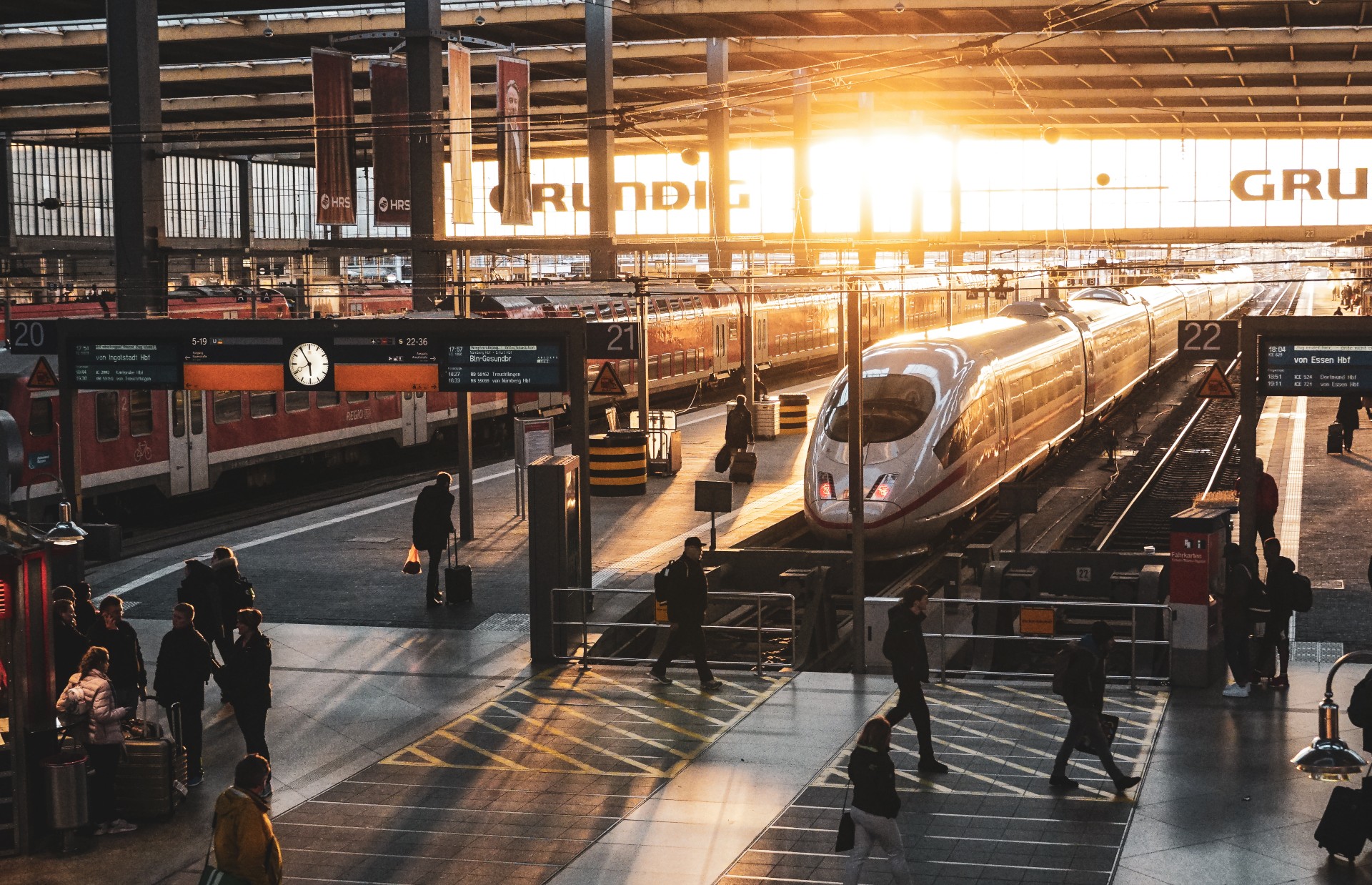Travelling by train within Europe was the Green Deal’s plan. Three years later, train travel is ‘the best advertisement for flying’. Do European trains still have a future?
Sunrise or sunset for the European railways? (Photo: Preston Foster | Unsplash)
BOX – Green Deal recommendations
In a 2020 report, the EU Agency for Railways describes how the European railway system could work better:
- Connect major urban areas in Europe by rail
- Connect the top 30 airports to the rail network
- Develop a European network of night trains
- Eliminate railway bottlenecks
- Promote an industrial railway policy
- Create a ‘Eurocontrol’ for the railways
- Funding for rail projects
As part of the European Green Deal, the commitment of 40% CO2 reduction by 2030 compared to 1990 is matched by the possibility of substantial European investment.
Even Omio is giving up. After looking for a train journey from Amersfoort to Florence for a while, the new travel planner switches to a listing of flights that cover the distance in two hours for a few hundred euros. ‘We also looked for airports nearby’ it says. Thus, the good intentions evaporate very easily.
Booking a train trip abroad is quite a puzzle, the NRC newspaper recently noted in its article entitled Trains across Europe: the best advertisement for flying. In the article it states, ‘once travelling, delays and missed connections are almost inevitable’. Why does reality align so poorly with the intentions of the 2020 European Green Deal (see text box below)?
High expectations, lower performance
“Covid,” says Dr Niels van Oort, co-director at the Smart Public Transport Lab at the Faculty of Civil Engineering and Geosciences. “Before Covid, trains largely ran on schedule. But during Covid, trains had to keep running even though there were hardly any passengers. That was disastrous for the business model. And when Covid was over, the number of passengers did not come back by a long shot. Added to that was a staff shortage so the quality of the public transport after Covid failed to be what it was before.”
‘Negative experiences have a disproportionate effect on our perceptions’
“I think there is a big mismatch between what people expect and what European railways can offer,” adds his colleague Prof. Oded Cats. He is the other co-director at the Smart Public Transport Lab.
He sees that more and more people want to travel by rail rather than by plane for climate reasons, and that drives up expectations. “But the reality is that many of Europe’s crucial connections are not yet ready. Connections make all the difference. Last week, for instance, I had to go to Lyon. There is an excellent connection between Lyon, Paris and Rotterdam, and the trip went entirely as planned. Often things go well, but negative experiences have a disproportionate effect on our perceptions.”
Many other international routes suffer from national differences in track gauge, voltage on the overhead wires, and different safety systems. It is not always necessary to change trains at borders, but trains on a European route do have to be able to handle different standards in voltage and security systems.
Interaction with national train traffic also differs from country to country, says Cats. In France and Spain, international lines have their own infrastructure. In Germany, this is not so much the case, making national and international trains more likely to get in each other’s way. “And then a delayed international connection does not have the highest priority for national traffic control between commuter trains and freight,” he says.
‘If something goes wrong with your train journey, who takes care of you?’
“A lot of attention is being paid to the failure of international rail links at the moment,” notes Van Oort. “In aviation, not everything goes according to plan either, but the service is often good with free food and drinks, or a hotel stay. But if something goes wrong with your train journey, who takes care of you? Often no one. The rail sector could learn a thing or two from that.”
Follow the track
Cats reiterates the importance of good connections. “A better connection attracts more travellers, which in turn influences where people want to go, which generates new traffic.” As an example, Cats cites succesful Dutch provider European Sleeper, which operates sleeper trains between Brussels to Berlin and Prague via Amsterdam.
“We want to do more research on this aspect over the next five years,” Van Oort says. “Compared to all the data on national public transport, international public transport comes off worse.”
- The TU Delft Smart Public Transport Lab will celebrate its first anniversary on Friday 17 November. Over the next five years, the lab will focus on inclusive mobility and shared mobility in addition to international public transport.
Green Deal recommendations
In a 2020 report, the EU Agency for Railways describes how the European railway system could work better:
- Connect major urban areas in Europe by rail.
- Connect the top 30 airports to the rail network.
- Develop a European network of night trains.
- Eliminate railway bottlenecks.
- Promote an industrial railway policy.
- Create a European traffic control for the railways.
- Funding for rail projects.
Do you have a question or comment about this article?
j.w.wassink@tudelft.nl


Comments are closed.